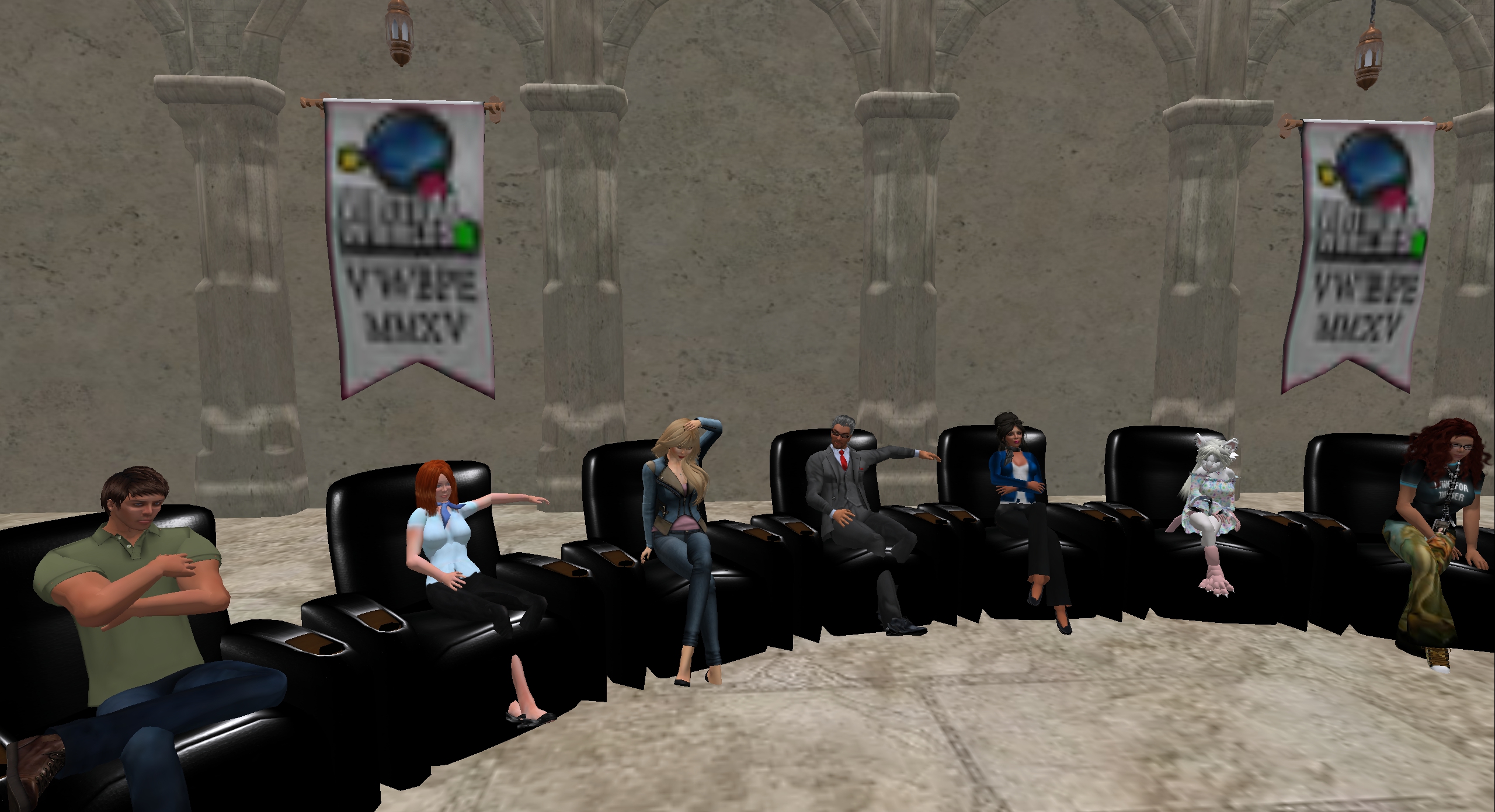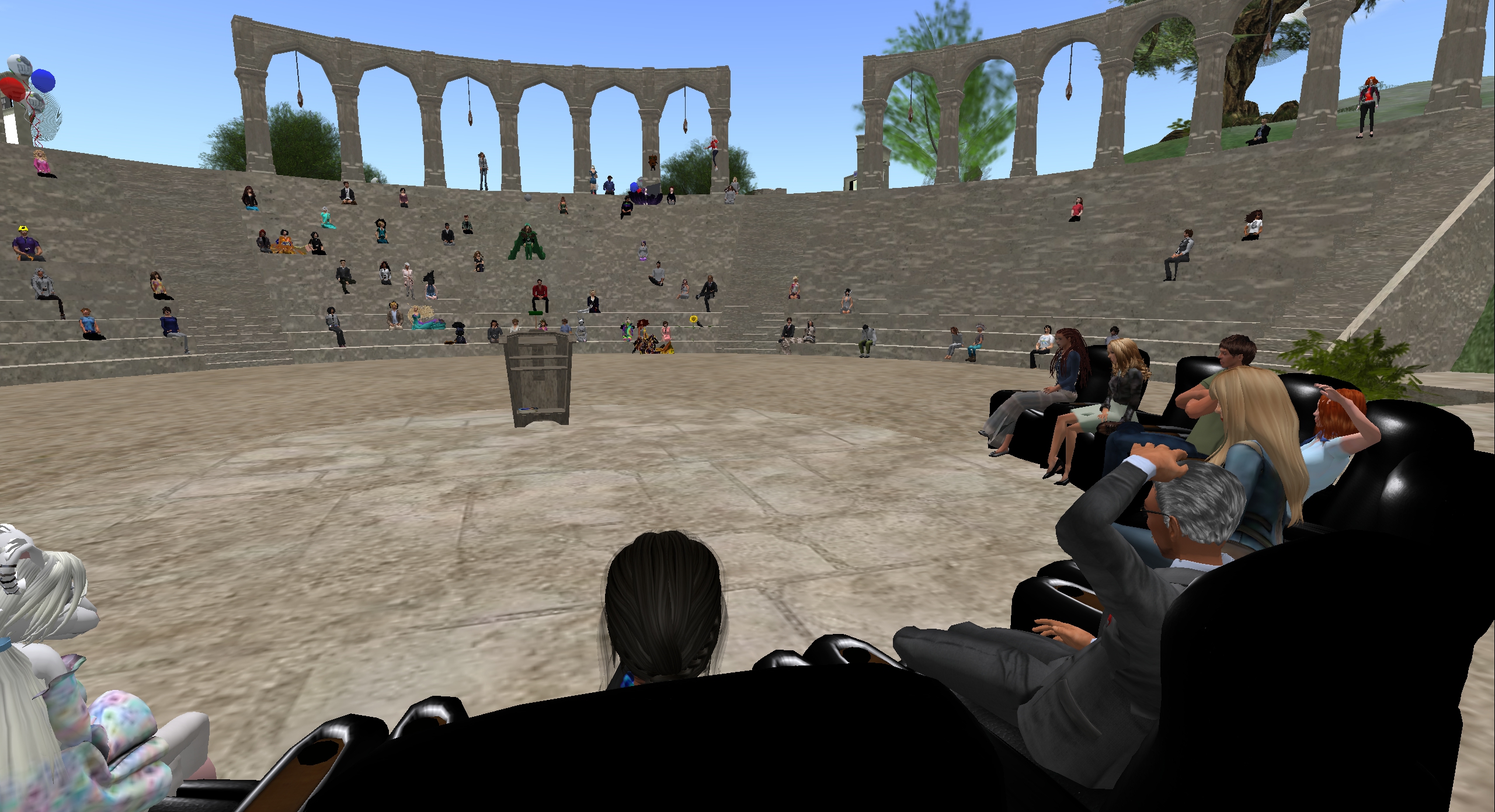Sunday
Mar222015
Community engagement in Second Life
Posted on  Sunday, March 22, 2015 at 2:37PM |
Sunday, March 22, 2015 at 2:37PM |  Email Article |
Email Article |
 Sunday, March 22, 2015 at 2:37PM |
Sunday, March 22, 2015 at 2:37PM |  Email Article |
Email Article | Last week I took part in a panel discussion titled 'Virtual Ability: Support, Collaboration, Research, Community' at the Virtual Worlds Best Practices in Education Conference 2015 that was hosted by the virtual world Second Life. I provided a brief outline of the class I teach, 'Virtual Environments: Is once life enough?' and described a field trip to Virtual Ability Island, a community established specifically to enable people with a wide range of disabilities by providing a supporting environment for them to enter and thrive in online virtual worlds like Second Life.
+++
I have been teaching a class in Second Life (with my former DIT colleague Locks Aichi) called ‘Virtual Environments: Is one life enough?’ since 2009. The class is delivered entirely online, with weekly meetings in Second Life and regular engagement through student blogs and social media. My first students were undergraduates from the School of Creative Arts taking it as an elective.
 Panel members with Acuppa Tae (aka John O'Connor) fourth from the left.
Panel members with Acuppa Tae (aka John O'Connor) fourth from the left.One decision we made that might be considered unusual for a university was to forgo the use of a private island. Instead we came to an arrangement with the already vibrant community, Dublin Virtually Live. Established in the early days of Second Life, by real life Dubliner and world traveller Ham Rambler, the Second Life version of Dublin provided an ideal cultural context for the class. To some extent it mirrored DIT’s position as a university in the centre of the city. But, more importantly, Dublin offered an already established cultural backdrop in which the students could be immersed. Sitearm Madonna, the virtual city manager, took an active interest in our activities and also attended as a student. This engagement has continued and he is now a regular contributor to the class.
With Sitearm’s encouragement we soon decided to offer places to Second Life residents who wanted to take the class on a stand-alone basis. This resulted in our meeting a broad range of professionals from diverse backgrounds who added experience and depth to the class. Many of these became friends and have also returned to the class as guest lecturers. They have also introduced us to many new communities over the years, including Virtual Ability Island.
Last year we started a new development and were joined by Dudley Dreamscape’s class from University of Akron, Ohio. Dreamscape (Prof Dudley Turner in Real Life) participated as a student in the class the previous year and following that we met in Real Life at a conference in Dublin. Over the course of a few days we planned a methodology that allowed us to commence joint delivery. The Akron students come from a more diverse range of disciplines than the Dublin students: engineering; nursing; education; dance; accountancy and so on. This brings not only a disciplinary richness to the class but also a cultural breadth that many participants would not otherwise experience.
The current class has thirty students with about fifteen from each university and the main aim of the module is to introduce the participants to online collaborative working. Second Life provides the virtual space for class meetings but we also explore the use of tools such as blogs, wikis, social media and so on. This prepares students to engage professionally with building their own online reputation and personal brand.
In order to experience online collaboration first hand students from each university are put into mixed groups to work on a project throughout the semester. This ensures they learn how to use a range of online tools to work together and plan effectively. They must decide how to communicate asynchronously across different time zones and cultural norms to produce a coherent presentation by the conclusion of the semester.
A key element of the module is the number of field trips arranged for students. These are mostly organised by our guest lecturers who introduce the class to a range of diverse online communities. Elfay Pinkdot, a long-time collaborator and former host of the Second Life jazz radio show Coffee and Pajamas, introduced us to Circe Broom’s Sunset Jazz Club and to some art collectives.
Dudley Dreamscape made contact with Gentle Heron and Virtual Ability Island, one of the very dynamic communities to inhabit Second Life.
 A view of the conference location in Second Life.
A view of the conference location in Second Life.The recent class field trip to Virtual Ability Island had a very distinct impact on our students. Gentle welcomed us and gave a brief outline on the genesis of the community and how it functions. Many of the students began to realise, for the first time, the potential of virtual environments for filling gaps in real lives. Speaking directly with the residents of Virtual Ability Island they began to understand that online engagement is not merely about games but can be an important social and professional space for people who might not otherwise be able to engage in this way.
Our hosts in Virtual Ability Island are open and welcoming – and willing to share their stories with the class. They answered questions and even asked some of their own! The interactive nature of the engagement shone through and impressed the students with its sincerity. (An account of the visit can be read on the module blog.)
Many do not quite understand the power of Second Life in some people’s lives. It is only when they meet those who rely on the environment and its communities for their social interaction that the power of this engagement is revealed. The opportunity to speak to members of the community and hear their stories first-hand is very powerful indeed. John Seely Brown and Paul Duguid propose that
...the more isolated learners are, whether physically or socially, the more they need access to peers, communities of practice, and other social resources”. [note 1]
The same goes for most of us: community engagement is a fundamental human need. When this is denied us in the Real World Second Life truly offers a second chance.


Reader Comments